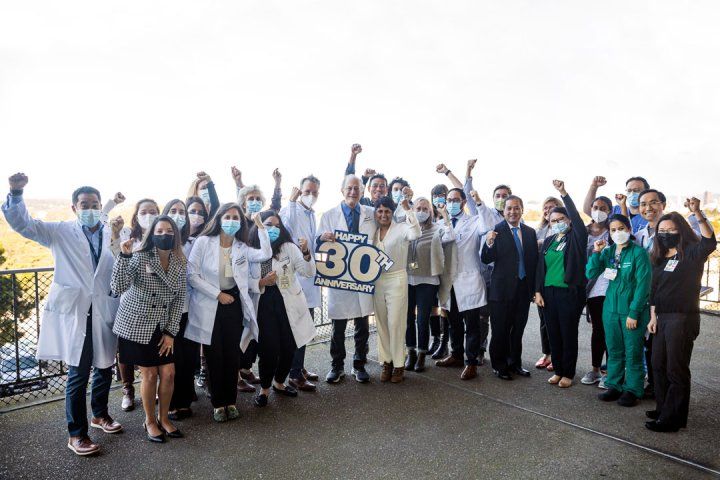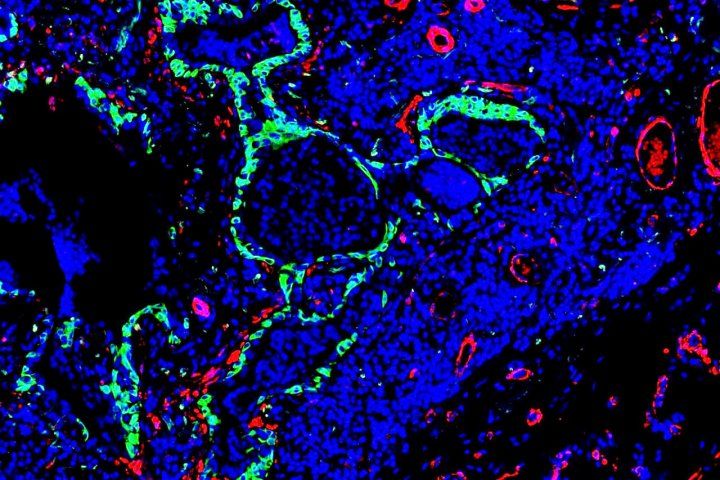As the world faces a pandemic, the lives of Patrick and Allison, empty nesters living in Fresno, are hit by a series of unusual events that defy their expectations.
Patrick was trying to reschedule his trip to Ireland, which was canceled due to the coronavirus, when it was discovered that the cause of the severe fatigue he was experiencing was a rare and potentially fatal lung disease. The couple kept pushing. But their 30th wedding anniversary was spent riding in an ambulance with sirens blaring and hearts pounding as they drove to a local hospital. After being transferred to the University of California, San Francisco awaiting a lung transplant, Patrick learned he would be patient number 1,000.
On April 13, 2022, a 60-year-old self-employed life insurance agent underwent a healthy lung transplant. “I don't like to use the word 'miracle' because not every patient gets to experience a miracle, but I have a new lease on life and it feels great.
Like Patrick, UCSF transplant patients are able to live normal lives with medication, a healthy diet, and exercise to prevent infections.
“I've lived a good life, surrounded by a wonderful family, wonderful friends, and now I feel like I've been able to live a better life than ever before,'' he said.During his illness, he grew more and more religious. Patrick, who has come to rely on him, said: , and the prayers of over 1,000 friends, family and well-wishers.
In 2001, the 3-year survival rate for UCSF patients receiving lung transplants was 50%. In 2021, it reached 90%. And over the past 20 years, median survival has increased from 3.5 years to 11.5 years.
Innovations that have improved survival rates include using a type of life support system during surgery in which a machine pumps blood outside the body to provide oxygen. According to Patrick's surgeon, when used in place of complete cardiopulmonary bypass, it reduces bleeding and lung injury and significantly reduces the risk of surgical airway complications. Jasleen KukrejaMD, Program and Surgical Director UCSF Lung Transplant Program.

Anti-rejection medications and close patient monitoring in the days after surgery and in the post-discharge period also contributed to the excellent long-term outcome, she said.
A program Kukreja started several years ago has improved access to donor lungs. The so-called extracorporeal lung perfusion process allows lungs to be kept “alive” outside the body in an environment that mimics the human body while assessing their suitability for transplantation for up to several hours.
“As a result of this program, we have transplanted several patients who otherwise would have had a 1 percent chance of being compatible,” she said.
Subtle symptoms portend a deadly disease
Patrick, a 20-year-old father of three who also lives in Fresno, started his illness with subtle symptoms. “A few years ago, I felt short of breath going up a hill. I thought I was just sitting too much,” he recalls. In May 2021, a pulmonologist suspected idiopathic pulmonary fibrosis. Kathryn BilelloPhysician at UCSF Fresno, and within a few months, his symptoms worsened and the diagnosis was confirmed. “Just walking across the room or taking a shower was making him extremely tired,” said Allison, a sales office manager at a law firm. It was in stark contrast to his normal lifestyle.

When Patrick's short-term survival became dire, Bilello arranged for him to be transferred to UCSF, where he would oversee his treatment. Steve HayesMD, Medical Director of the Lung Transplant Program. “Idiopathic pulmonary fibrosis is a relentless, progressive disease in which fibrous scar tissue builds up in the lungs, affecting their ability to deliver oxygen. Without a transplant, patients live approximately three to four years. “It’s possible,” he said. “But with medicines to prevent infections, a healthy diet, and exercise, UCSF transplant patients like Patrick can lead normal lives. I think I'll go back to my life.”
A week after the surgery, Patrick was walking around the hospital floor without a walker or the portable oxygen tank that had been his constant companion in the weeks before the transplant. He also has plans. He plans to return to work, but at a lighter workload (“Nobody is indispensable,” he said with the wisdom of someone whose future was in jeopardy not long ago). . He then resumes his travel plans with Alison.
Back to the calendar, Ireland. The couple hopes their third vacation will be a charm.


